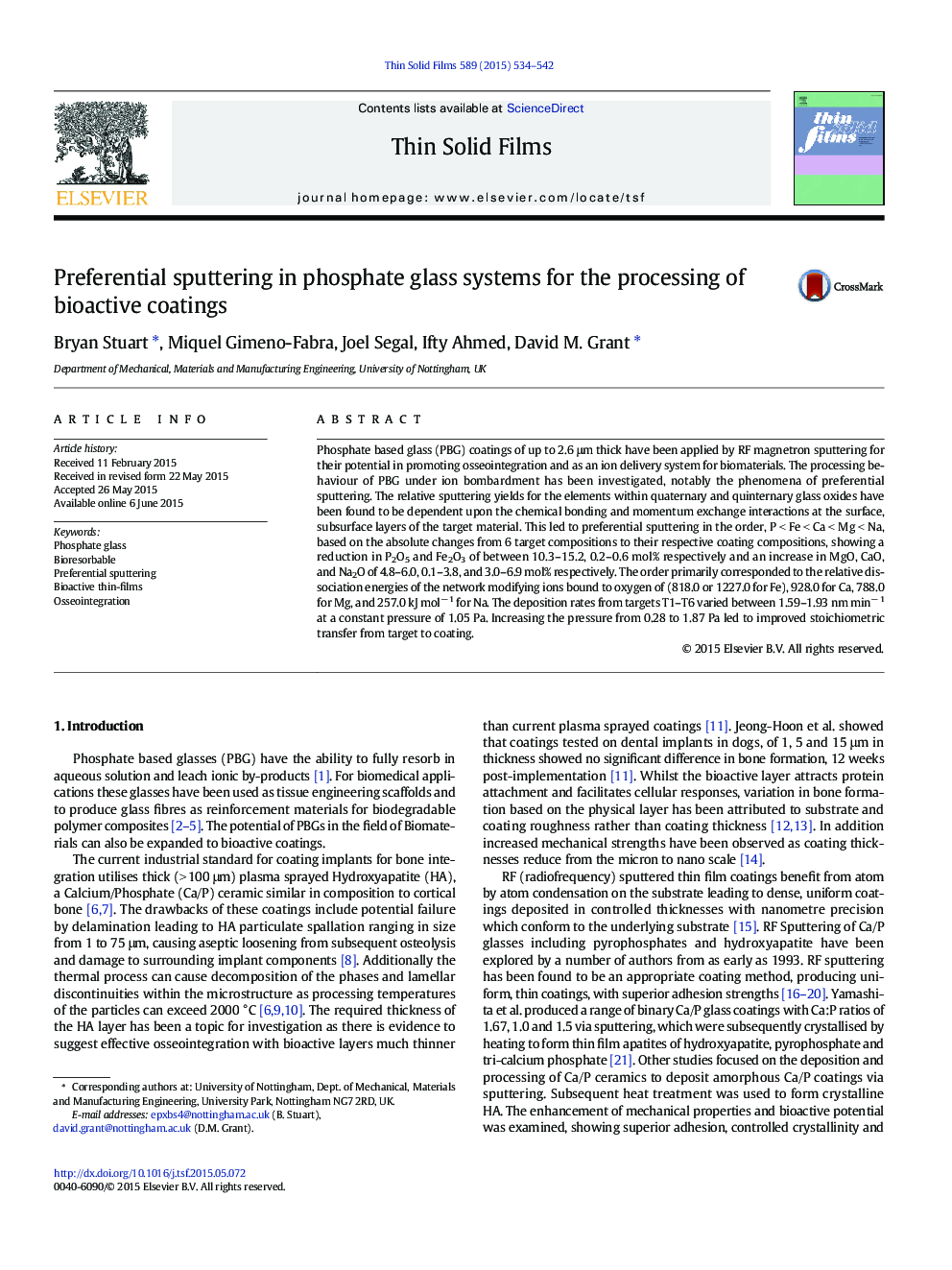| Article ID | Journal | Published Year | Pages | File Type |
|---|---|---|---|---|
| 1664635 | Thin Solid Films | 2015 | 9 Pages |
•Introductory review of thin bioactive coatings of silicate glass and hydroxyapatite coatings•Production of nano and micro resorbable phosphate glasses applied by magnetron sputtering•Preferential sputtering based on glass' structure and momentum exchange interactions•Compositional and structural characterisations of deposited phosphate glasses•From these findings, sputtering from glass targets may be conducted with improved precision.
Phosphate based glass (PBG) coatings of up to 2.6 μm thick have been applied by RF magnetron sputtering for their potential in promoting osseointegration and as an ion delivery system for biomaterials. The processing behaviour of PBG under ion bombardment has been investigated, notably the phenomena of preferential sputtering. The relative sputtering yields for the elements within quaternary and quinternary glass oxides have been found to be dependent upon the chemical bonding and momentum exchange interactions at the surface, subsurface layers of the target material. This led to preferential sputtering in the order, P < Fe < Ca < Mg < Na, based on the absolute changes from 6 target compositions to their respective coating compositions, showing a reduction in P2O5 and Fe2O3 of between 10.3–15.2, 0.2–0.6 mol% respectively and an increase in MgO, CaO, and Na2O of 4.8–6.0, 0.1–3.8, and 3.0–6.9 mol% respectively. The order primarily corresponded to the relative dissociation energies of the network modifying ions bound to oxygen of (818.0 or 1227.0 for Fe), 928.0 for Ca, 788.0 for Mg, and 257.0 kJ mol− 1 for Na. The deposition rates from targets T1–T6 varied between 1.59–1.93 nm min− 1 at a constant pressure of 1.05 Pa. Increasing the pressure from 0.28 to 1.87 Pa led to improved stoichiometric transfer from target to coating.
